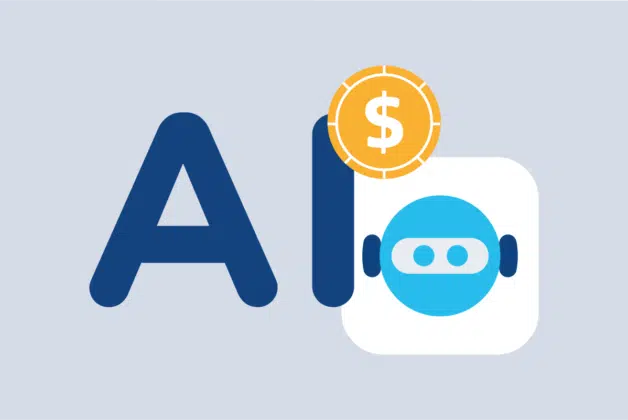 Federica Paolicchi - 11 September, 2024 - 4 ’ read
Federica Paolicchi - 11 September, 2024 - 4 ’ readCall Transfer Rate: how AI Virtual Agents can reduce it
What happens when a customer calls a business? 99% of the time, they’re greeted by a receptionist who then transfer their call to the most appropriate colleague. What many don’t realize is that the flow of this exact process is what makes or breaks a customer service review. So how can a business gain insight into how their call transfer rate is performing? How can they optimize it? What role does AI play in all this?
Let’s dive into the details, starting from defining what call transfer rate is, why reducing it can improve your services, and how AI is your MVP in this mission.
What is the Call Transfer Rate?
Let’s start from the basics. The call transfer rate refers to how many calls are transferred from one agent to another or a different department. So, let’s say your receptionist transfers a technical call to a support engineer. If that engineer solves the caller’s problem, everyone is happy. If they don’t, the call is transferred again. And if the second engineer still fails, yet another transfer is on the caller’s way. This would indicate a high transfer rate, while a low transfer rate would be your first agent solving the problem without prolonging the call.
In particular, a high transfer rate can indicate:
- Agents aren’t equipped to handle customer inquiries effectively
- Receptionists aren’t trained on what agent or department is suitable to solve different queries
- Your first point of contact is poorly chosen
- Organic changes haven’t been communicated
- There’s no common updated knowledge base available
These are just some examples, all of them inevitably leading to longer calls and waiting times.
Why reducing the Call Transfer Rate matters
Let’s look at some statistics. SQM’s research says 19% of customers who call a contact center are transferred to another agent. When this happens, customer satisfaction(Csat) is 12% lower, and FCR is 14% lower compared to situations where a transfer is unnecessary. The main reasons for these transfers are the IVR voice menu system failing to route the customer to the correct agent or deficiencies in the agent’s knowledge.
For even more perspective, according to a study by Salesforce, 56% of customers say they often have to repeat or re-explain information to different representators, and67% of them say they would even rather resolve issues through self-service channels. So imagine how they feel when it takes 4 people and hearing customer service waiting music 3 times to solve what looked to them like a single query. Do you think they’d want to call you again?
Moreover, the manner in which a transfer is handled significantly impacts Csat and FCR. SQM’s research indicates that customers experience higher satisfaction rates when they are warm-transferred, as they don’t have to repeat their information to the new agent.
So, to recap: customers don’t want to wait. They’re so impatient they’d rather solve issues on their own. They want immediate answers, and possibly any time of day. The best customer experience occurs when there is no wait time to reach the appropriate agent, and even more so when the initial agent can handle the call without a transfer.
Exploring Voice and Digital Solutions to reduce Call Transfer Rate
Assessing your call transfer performances
The first step in assessing customer satisfaction and identifying excessive call transfers within your company is to collect and analyze data, such as call volume, resolution times, and customer satisfaction metrics.
How can you achieve this? By equipping your agents with the right tools, like a customer service console tailored to their needs and access to conversational insights. Gaining these insights is essential for making informed, strategic decisions that enhance both customer experience and operational efficiency.
Strategic call transfer improvement with AI
But the real MVPs, making a difference? Once you’ve understood your performances, it’s AI-driven voice bots. Solutions like Imagicle Voice Virtual Agents can significantly reduce call transfer rates by handling inquiries without human intervention, but in a human-like manner. The AI behind them speaks multiple languages and picks information up from your knowledge base, making it constantly trained to serve customers worldwide with accurate information. So you can forget about training whole teams for days: all you need to do is keep one single, holistic knowledge base updated and boom: a low transfer rate in on your way. Making AI your first point of contact ensures issues are solved potentially without any transfer.
Here’s a feature rundown for Imagicle Voice Virtual Agents:
- Multilingual Capabilities: available today in 6 languages, Voice Virtual Agents prevent the call from being transferred to an agent who doesn’t speak the customer language and break language barriers with ease.
- Steady and reliable, no matter what: Virtual Agents never miss a beat, they just keep going! They don’t get tired or overwhelmed by high call volumes. This means they deliver consistent, top-notch service every time, helping keep those pesky call transfer rates nice and low.
- Continuous learning: linking your Agents to an updated knowledge base means providing them with a complete database to handle any customer query. Whether it’s product features, process information, or who to transfer the call to if the customer requires a human agent, it give the Voice Virtual Agents a way to never give the wrong answer.
- Self-trained capabilities: they continuously learn and update themselves with the latest information in your KB, eliminating the need for manual training or updates, allowing them to always give the best answer without transferring the call in search for an agent who know the latest news.
- Zero wait times: unlike human agents, voice virtual agents are on the clock 24/7/365, ensuring that customer queries are addressed promptly, regardless of the time of day, and thus keeping wait times near zero;
Moreover, Virtual Agents provide a virtually infinite level of customization. From booking appointments, to checking shipping statues, to checking invoices or bank balances, all the way to booking flights and much more, as you can see in these demos.
And if they really can’t solve the issue, they can always transfer to a human agent – and even in this case, the customer’s journey involves only a single transfer, because they’ll know who to transfer the call to thanks to their knowledge base. This allows agents to focus on more complex, high-priority tasks where their expertise is truly needed.
Go the omnichannel way with chatbots
For further optimization and a complete omnichannel approach, you can add AI chatbots to the mix. Whether it’s answering routine inquiries on WhatsApp, engaging in website chat, SMS or interacting through other digital platforms, Digital Virtual Agents ensure seamless support.
Nowadays, users are constantly connected, it’s crucial to offer customer service on their preferred channels. By implementing a chatbot, you not only reduce the need for call transfers but also achieve call deflection, freeing up your phone lines and optimizing your support operations. It’s all about making your customer service more accessible, efficient, and tailored to the needs of the modern, connected customer.
Let’s talk about it.
You might also be interested in…
-
Products BlogAI Virtual Receptionist Cost: Plans, Average Pricing and ConsiderationsAI Virtual Receptionist Cost: Plans, Average Pricing and ConsiderationsLooking for a virtual assistant? Learn everything about AI Virtual Receptionist cost and selling plans structures.
-
Products BlogAI Virtual Receptionist: the cost of not investing in itAI Virtual Receptionist: the cost of not investing in itInvesting in an AI Virtual Receptionist shouldn't be so scary: let's debunk some myths.
-
Products BlogAre AI Virtual Receptionists Worth It?Are AI Virtual Receptionists Worth It?Is an AI Virtual Receptionist a good investment for your business? Read about common objections and answers.


